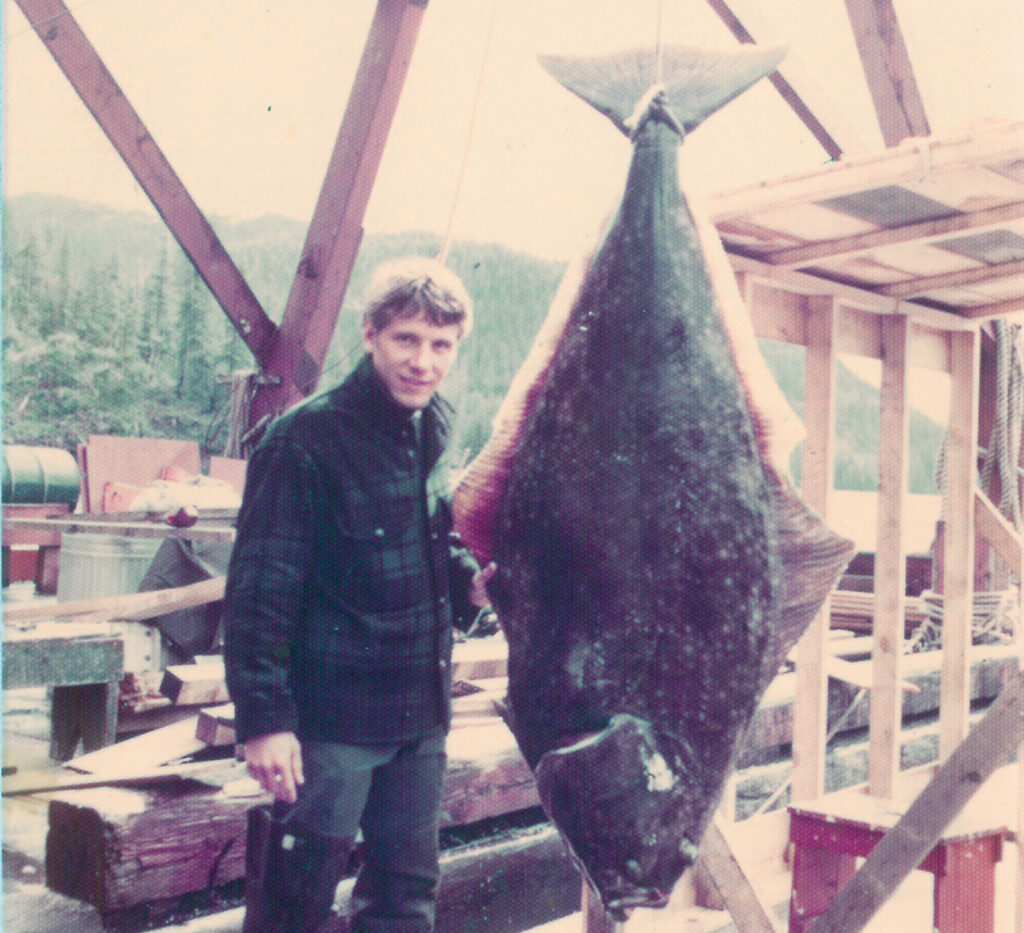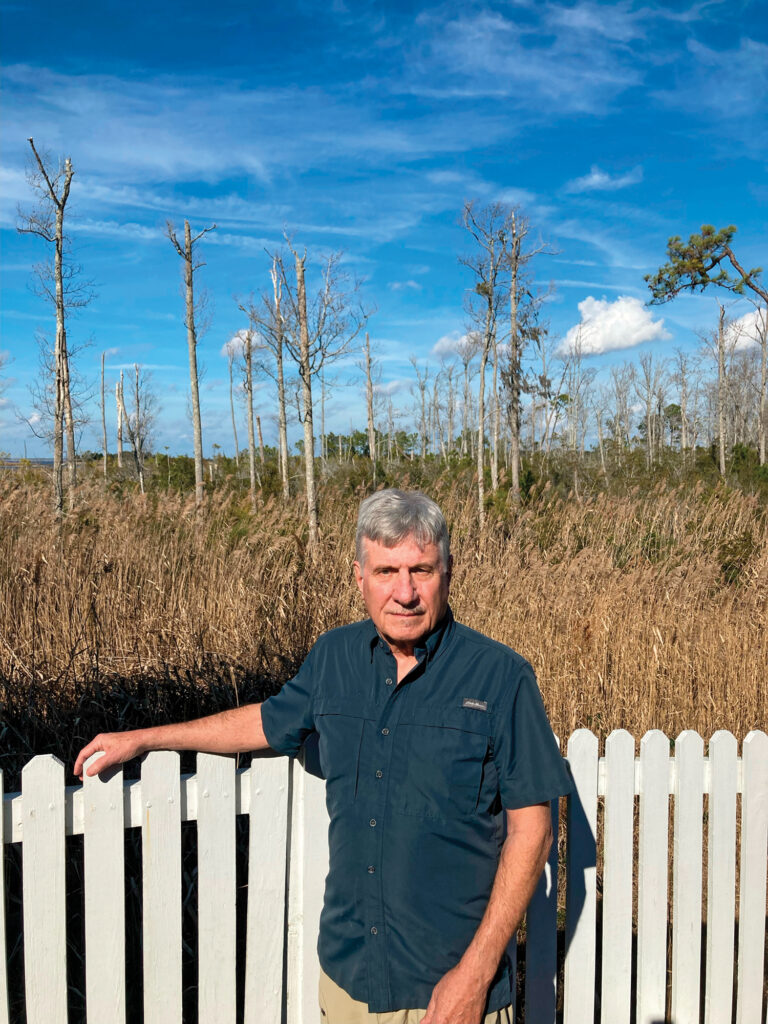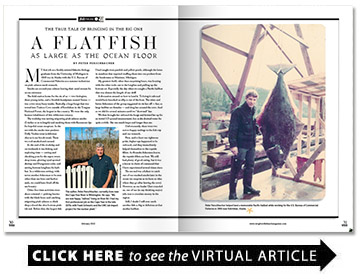A Flatfish as Large as the Ocean Floor
The true tale of bringing in the big one
BY Peter Perschbacher

My first job as a freshly minted fisheries biology graduate from the University of Michigan in 1968 was in Alaska with the U.S. Bureau of Commercial Fisheries as a summer technician on pink salmon smolt research.
Smolts are second-year salmon leaving their natal stream for ocean existence.
The field station home for the six of us — two biologists, three young techs, and a Swedish handyman named Sixten — was a two-story buoy tender. Basically, a large barge that was towed into Traitors Cove outside of Ketchikan in the Tongass National Forest, the largest in the country. We were the only human inhabitants of this wilderness estuary.
The workday was netting migrating pink salmon smolts (3 inches or so in length) and marking them with fluorescent dye for hopeful ocean recapture. In the net with the smolts were predator Dolly Varden trout (a delicious char as is our brook trout). These we cool-smoked and canned.
At the end of the workday and on weekends it was fishing and exploring time — setting and checking pots for the super sweet, deep water, glowing-eyed spotted shrimp and Dungeness crabs, and setting bottom longlines for halibut. In a wilderness setting, with never another fisherman to be seen other than sea lions and harbor seals, we could have lived off the sea bounty.

Other free-time activities were shore oriented — picking berries with the black bears and catching migrating pink salmon so thick they colored the river bottom pinkish-red. Before this, the largest fish I had caught were panfish and yellow perch, although the latter in numbers that required stuffing them into our pockets from the breakwater at Manistee, Michigan.
My greatest thrill, other than surprising bears, was boating with the other techs out to the longline and pulling up the bottom set. Especially the day when we caught a Pacific halibut that was almost the length of our skiff.
A discussion ensued on how to land it. To bring it onboard would have knocked us silly or out of the boat. The wiser and better fisherman of the group suggested we tie her off — her, as large halibut are females — and drag her around the cove. And so we did for several minutes until we “drowned” her.
We then brought her onboard the barge and hoisted her up for an initial 125-pound measurement, less as she drained water for quite a while. She was much larger and longer than me.
Unfortunately, there were two not-so-happy endings to the fish trip and our research.
First, and to hurt our righteous pride, higher-ups happened to be onboard, and they immediately helped themselves to the topside fillets. As flounder fishermen know, the topside fillets are best. We still had plenty of good eating, but it was a lesson in chain of command that I have experienced several times since.
The second was a failure to catch one of our marked smolts later in the ocean (no surprise as we have no idea where they go after leaving the cove). However, as our leader Chet consoled us, one of our (to my thinking major) jobs was to circulate money in the region.
Still, I doubt I will ever catch another fish as big or delicious as that mother halibut.
